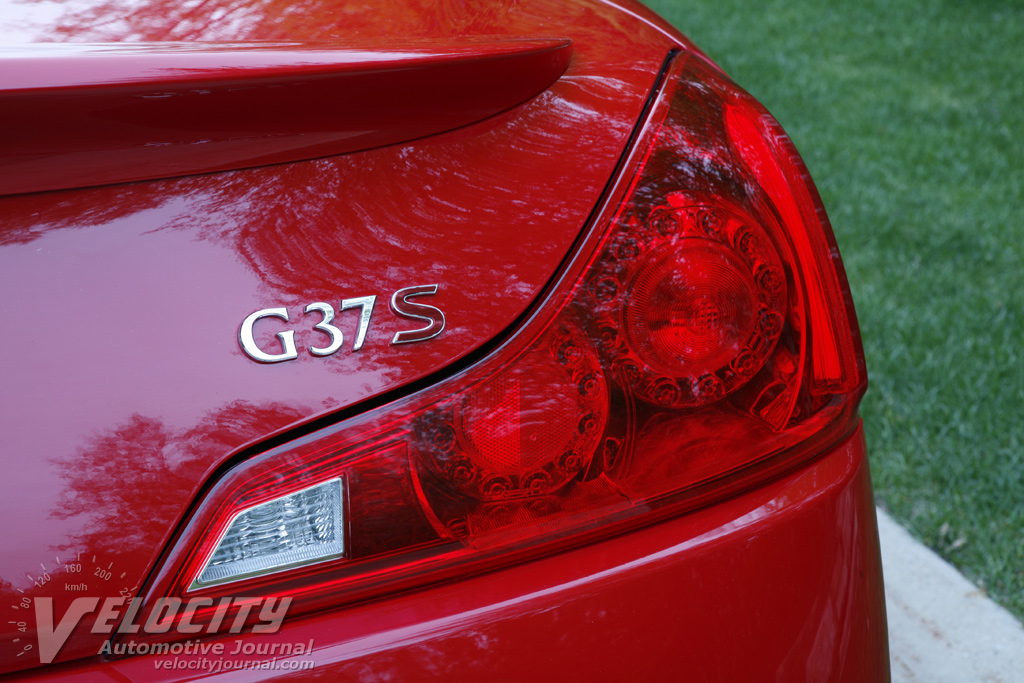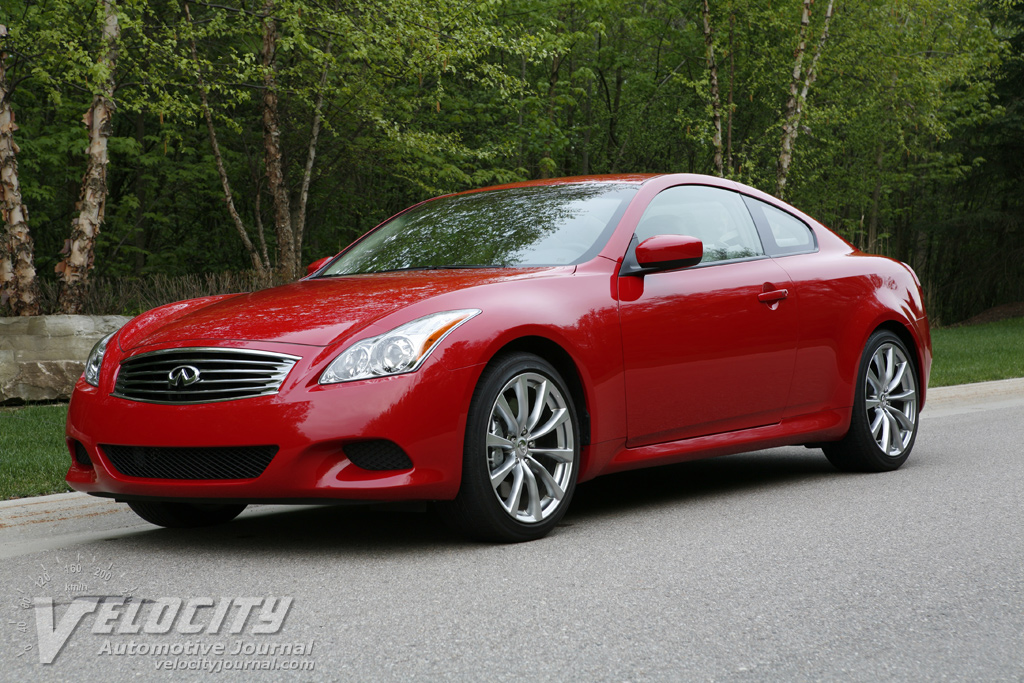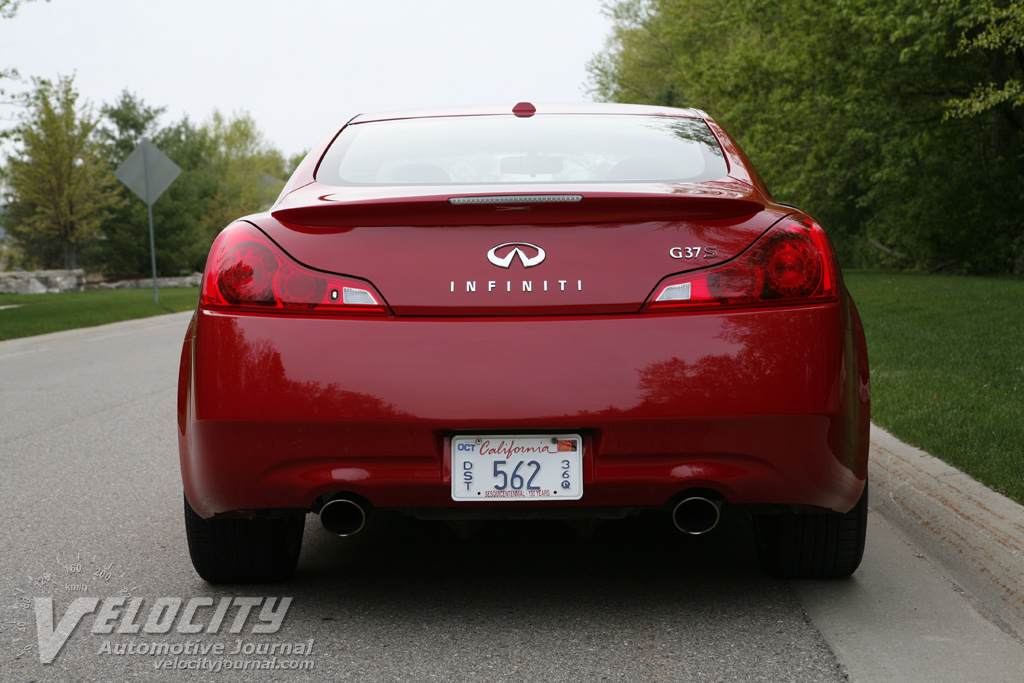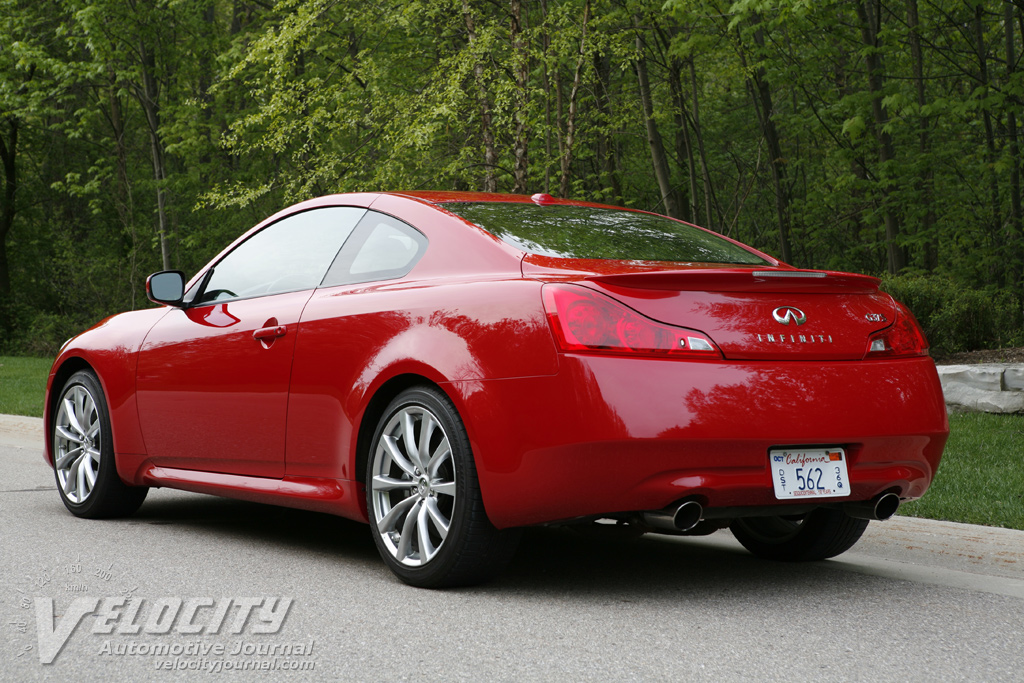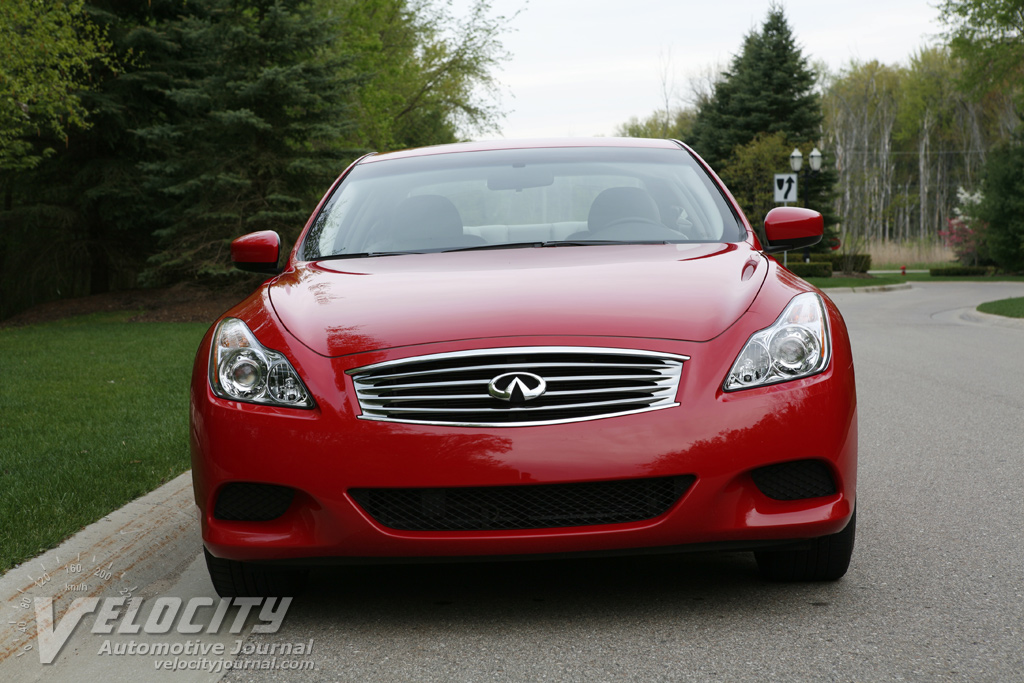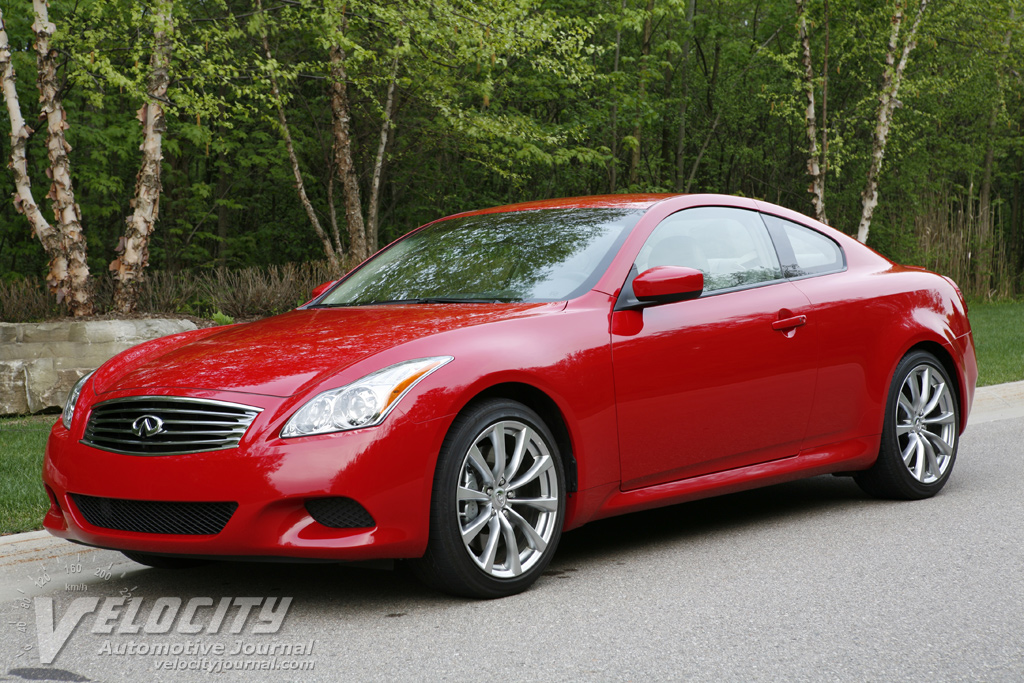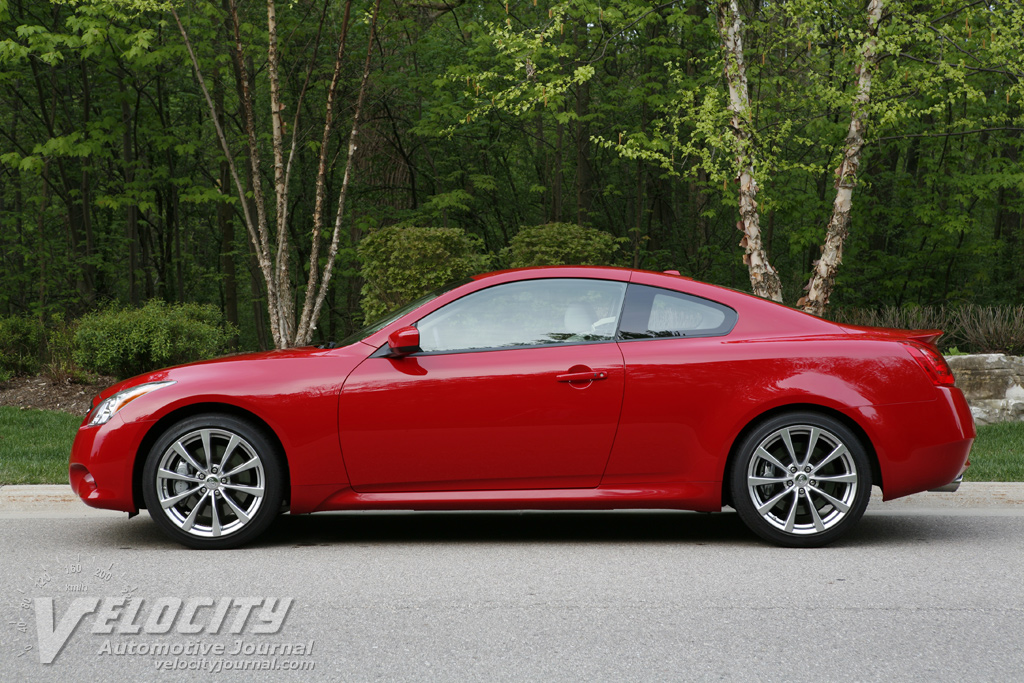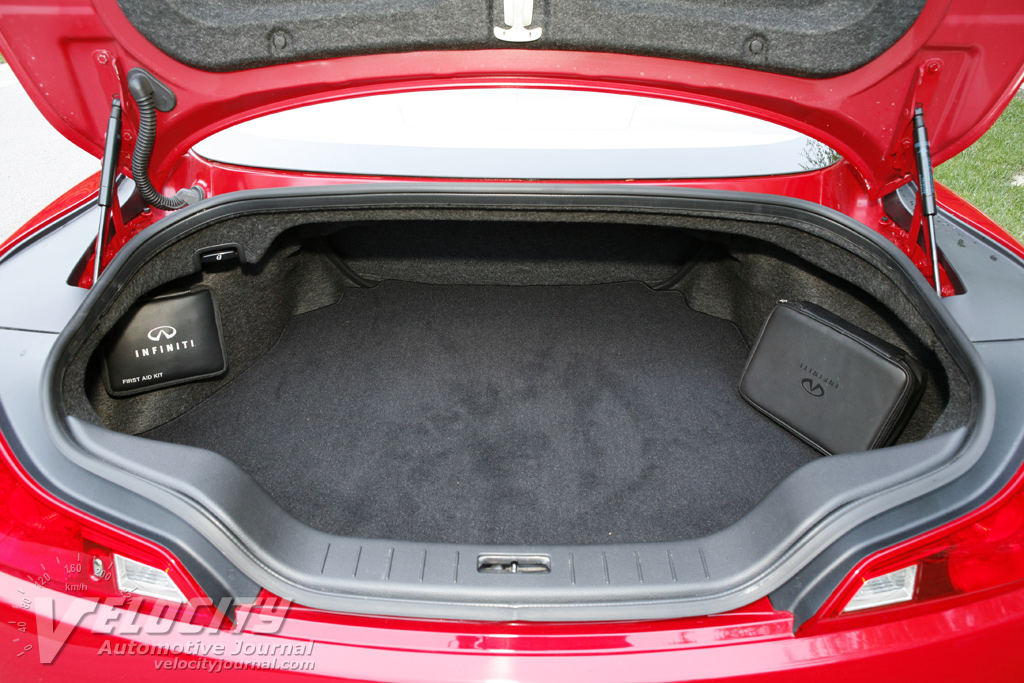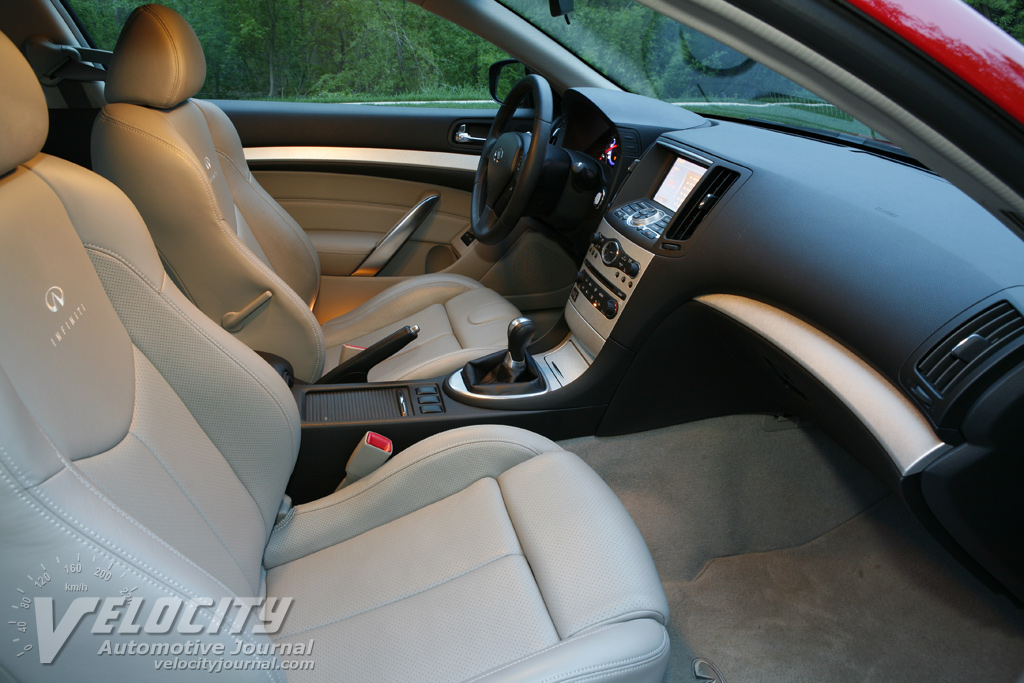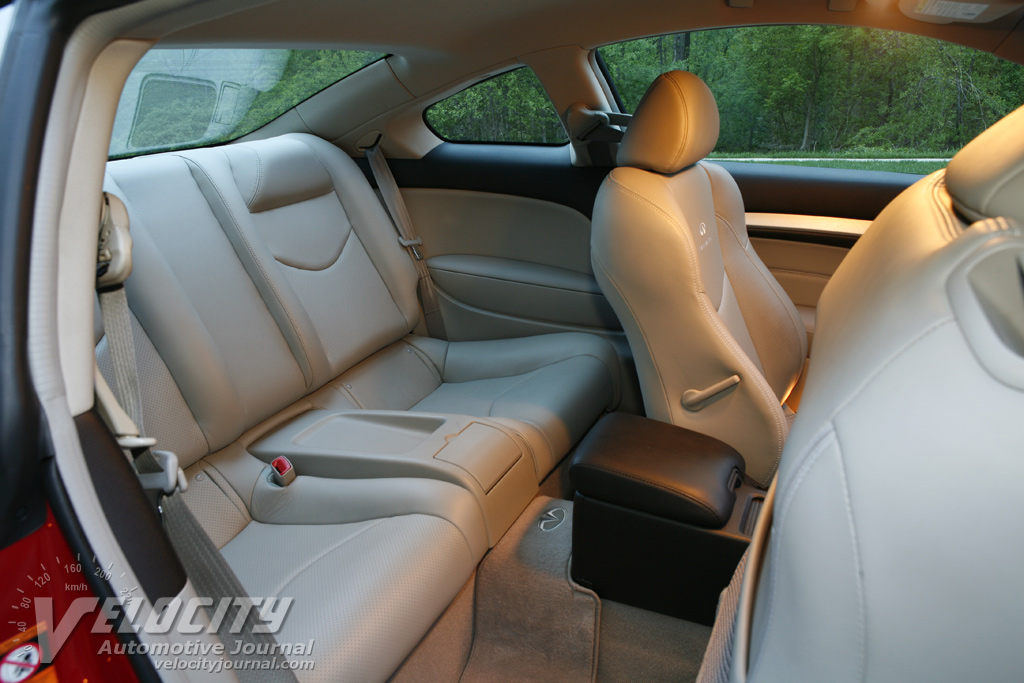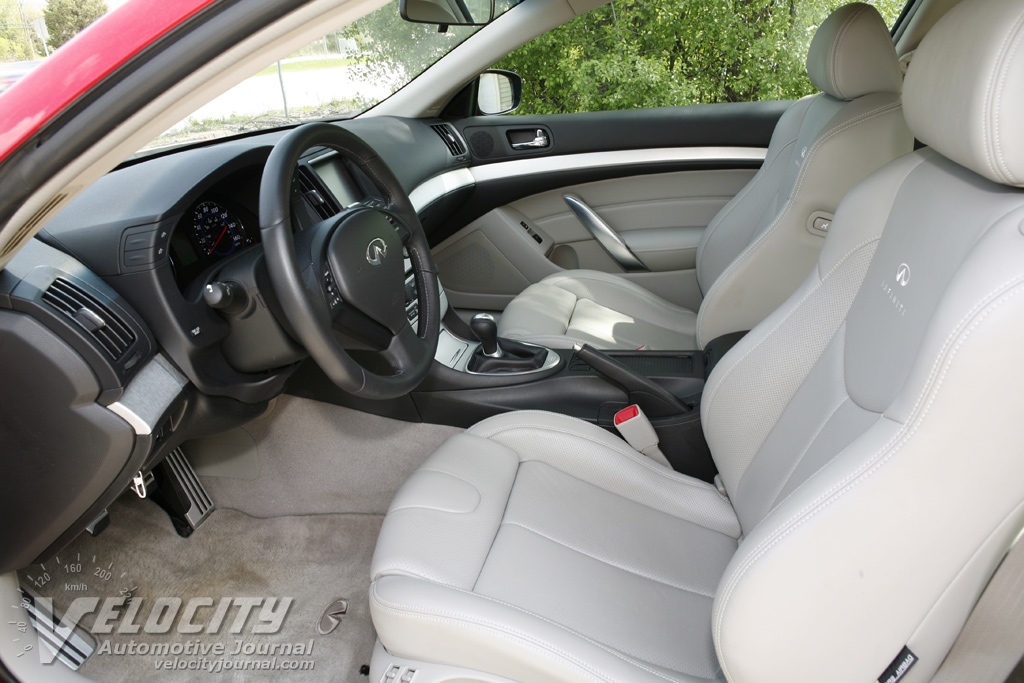2008 Infiniti G37S
05/16/2008
Shahed Hussain
Among Japanese sport coupes, the G37 has no real competition, as Lexus SC430 is more about luxury than sport, and Acura doesn't have a coupe in its lineup. Infiniti's real target is the BMW 3-Series coupes and the Audi A5, both of which are slightly further up the price ladder than the Infiniti. All three coupes are fresh designs that showcase each brand's engineering expertise at a relatively affordable price point. Does the G37 have the power, refinement, and panache to take on the Germans? Infiniti certainly thinks so.
Infiniti offers the G37 in three models: G37 ($34,900), Journey ($35,650) and Sport 6MT ($36,200). Only the G37 Sport 6MT is available with a 6-speed manual, while the other two variants get a 5-speed automatic. We tested a 2008 G37 Sport 6MT equipped with a rear spoiler ($550) and trunk mat ($105); the sticker price was $36,855, which included the $765 destination/handling charge. Other major options include the Premium Package ($3,200), Technology Package ($1,150), Navigation Package ($2,200), Power Moonroof ($1,000), and 4-Wheel Active Steer ($1,300).
When the first G35 coupe debuted, Infiniti was criticized for the abundant hard plastic trim that adorned the interior. As a result, the new G37 received a thoroughly revamped interior with more soft-touch trim throughout, as well as textured aluminum accents across the dashboard, center console, and the doors. A multi-function LCD display at the top of the center stack shows audio and climate control systems status; logically arranged buttons and knobs for the audio and vehicle systems cluster below the LCD screen. Infiniti's signature analog clock is inset between the AM/FM/CD/XM satellite radio controls. At the bottom of the center stack are the buttons and knobs for the dual-zone climate control system. A 12V outlet is under a flip-out door on the center console. Behind the stubby shift lever are dual cupholders hidden under a sliding cover; additional cupholders are on the door pockets. Under the center console bin is a single cupholder, audio/video inputs that link to the LCD screen, and an additional 12V power outlet.
Infiniti designed the instrument panel and steering column to move in unison, so the gauges are always in the driver's line of sight. The fat leather-wrapped steering wheel rim has subtle contours at the 10 and 2 o'clock positions for the driver's hands; the obligatory audio and cruise control buttons are neatly integrated on the spokes. Exterior mirror and power window switches are on a slanted pad above driver's door pocket, but they are too low for convenient access. Infiniti's lozenge-shaped key fob slips into a slot to the left of the steering wheel; as long as the driver possesses the fob, the engine start/stop button will function like a standard key. In the driver's footwell are aluminum gas, brake, and clutch pedals; even the dead pedal is aluminum; rubber non-skid pedal pads keep feet from slipping off.
The G37 Sport and Journey models equipped with the Sport Package get a standard multi-adjustable power driver's seat with an extendable thigh cushion, manual lumbar support, and power thigh and torso bolsters. The passenger seat has 8-way power settings, but lacks the lumbar and bolster adjustments. We found the seats very comfortable for a variety of physiques, although some drivers may find the cushion too narrow for their backsides. Back seat access requires minor contortions, even with the power-assisted passenger seat that slides forward. Rear passengers have reasonable legroom if the front seat occupants cooperate, but the sloped roofline limits headroom for occupants taller than 5'-8". However, the deeply contoured seats are reasonably comfortable for shorter adults. A center console between the rear seats includes a small package shelf and dual flip-out cupholders. With a few additional inches of headroom, the G37 could qualify as a genuine 4-seat coupe, but is more accurately described as a 2+2.
A serious sport coupe must have an engine to match its mission, and the G37 certainly qualifies. According the Infiniti, the all-aluminum VQ37VHR powerplant has 35% different and unique parts compared to the VQ35HR that powers the G35 sedan. The all-aluminum 3.7L V-6 redlines at 7,600 RPM, and includes VVEL (Variable Valve Event and Lift), a refinement of conventional variable valve timing. Power output is an impressive 330-bhp @ 7,000 RPM, with maximum torque of 270 lb-ft. @ 5,200 RPM. VVEL variable valve timing ensures ample torque as low as 2,000 RPM. The smooth V-6 has a linear powerband that builds seamlessly, accompanied by a throaty, yet subdued burble that becomes higher pitched near redline.
Infiniti equips the base G37 and Journey models with a 5-speed automatic, but the G37S gets a close-ratio 6-speed manual only. The short throw shifter requires a firm hand, but rewards with unerring accuracy. The stiff clutch pedal may surprise some drivers accustomed to typical low effort clutches in many Japanese cars. To make matters worse, the clutch engages abruptly, so smooth shifts require patience and practice. Dedicated manual transmission enthusiasts probably won't mind, but we think many drivers will be better served by the 5-speed automatic in the other G37 models. Although both transmissions share identical final drive ratios (3.692:1), the manual transmission has a slightly taller first gear ratio than the automatic (3.794:1 vs. 3.841:1), while top gear is taller (0.794:1 vs. 0.839:1). As a result, the 6-speed equipped coupe achieves a 26 MPG EPA highway rating, vs. 24 MPG for the automatic. In the city, the manual transmission gets 17 MPG or 1 MPG less than the automatic. In our mixed urban and highway driving, we managed to get about 21 MPG.
Along with its robust V-6, the G37S has the handling to match its powertrain. The front suspension includes double wishbones, coils springs, dampers, and a stabilizer bar, while at the rear is a multi-link setup with coil springs, dampers, and a stabilizer bar. To minimize unsprung weight some suspension components use aluminum. The G37S gets a standard sport suspension for improved handling (available on the G37 Journey with the Sport package). Also included as part of the Sport package are 19-inch alloy wheels shod with Bridgestone RE050A summer tires: 225/45WR19 (front) and 245/40WR19 (rear). A standard viscous limited-slip rear differential keeps wheel spin under control.
A sport coupe such as the G37S deserves exceptional performance tires, and the standard Bridgestone RE050A tires are up to the task, with excellent grip and turn-in response. Other G37 models get 225/50R18 all-season tires on 18-inch wheels. Power assist for the rack-and-pinion steering varies according to vehicle speed; effort reduces progressively at higher speeds, but feels completely natural, without any artificial heaviness. A faster steering ratio (2.7 turns lock-to-lock) is part of the Sport package; the optional 4WAS (Four-wheel Active Steer) varies the steering ratio from 2.2-2.6 turns lock-to-lock for even quicker steering response.
The base G37 adopts the brake package from the G35 Sport sedan. Even larger diameter brakes are standard on the G37 Sport (optional on the Journey model): 14.0" diameter vented rotors (front) and 13.8" diameter vented rotors (rear). In addition, the upgraded brakes include aluminum 4-piston calipers (front), and 2-piston calipers (rear). ABS, EBD (Electronic Brake force Distribution), and BA (Brake Assist) are standard on all G37 models. From a driver's perspective, the subjective result of the sophisticated brake technology is a firm brake pedal that slows this coupe with authority, from any speed.
During our test, we drove the G37S over smooth concrete highways and cratered asphalt streets. Despite the stiffer sport tuning, the ride never felt harsh; the suspension soaked up bumps and potholes with more compliance than we expected. In normal driving, body roll, dive, and squat were minimal; the G37S attacks curves almost like its sibling, the Nissan 350Z. Occasionally the suspension would skate and hop over some rippled asphalt surfaces. Nonetheless, the superb chassis tuning allowed us to feel completely under control regardless of the road conditions. On the interstate, the Infiniti was rock solid; the suspension, aided by the stiff chassis, absorbed bumps and divots with no effect on directional stability. Even though the G37S is an unapologetic sport coupe, Infiniti managed to minimize tire, road, and wind noise to fulfill its secondary role as a grand tourer. Some customers may find the sport suspension too stiff for their liking; for them, the G37 Journey with the 18-inch wheel/tire package and softer standard suspension is probably more suitable.
When Infiniti introduced the original G35 coupe in the US, it was aimed directly at the BMW 3-Series, which dominates the entry luxury coupe segment. While the market has gotten more crowded, with the addition of the new Audi A5, the G37 is more than capable of taking on its European competition. Instead of imitating the Germans, Infiniti makes no apologies for the distinctly Japanese flavor of its sport coupe. Of course, it doesn't hurt that the G37 offers more power and standard equipment at a lower price than its rivals; but that's just a bonus, because Infiniti no longer plays second fiddle to anyone.


